This article is part review and part historical homage. The review part (and most of the photos) will focus on the BK62, Becker’s homage to the classic Kephart knife—true in almost every respect.
Horace Kephart is hardly a household name. For those in the bushcraft community, though, Kephart holds a reverential status. His writings on naturalism, camping, and cooking were read by countless Americans around the turn of the century—Americans who were increasingly bound to jobs in cities that forced them into factories.
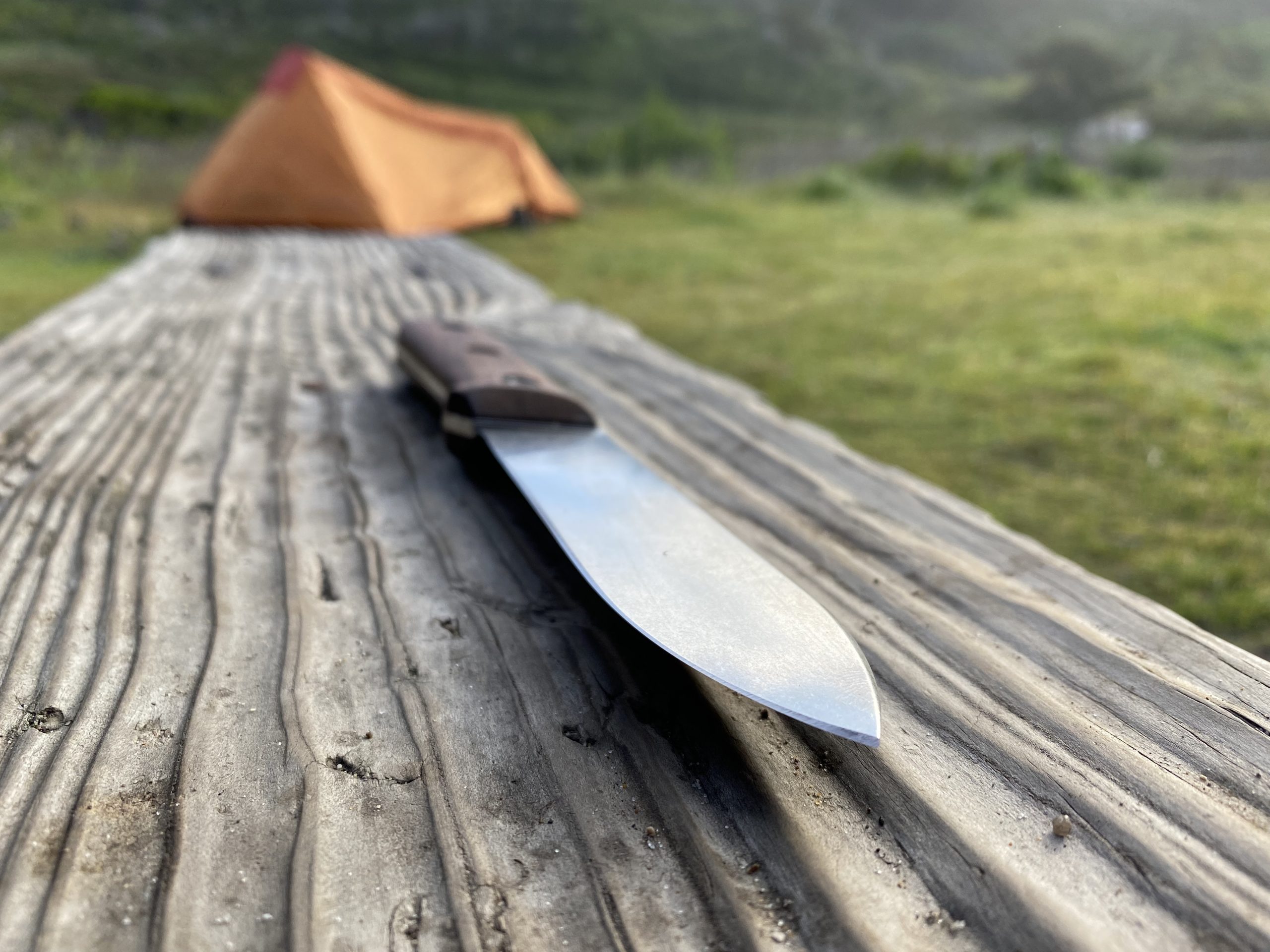
Getting outside was probably even better for your health then. There was no OSHA. The soot that defined American progress was seen a sign of success.
But there was another America. And Kephart sought it out. He’s most famous for his chronicles of southern Appalachian cultures, where he engaged in a kind of participant anthropology. For those keeping score, there wasn’t really a school of ethnography there, either, much less theories on participant observation. Most anthropologists encountering new culture groups were more interested in the artifacts than the intangible ways of life.

But Kephart went native. And he took a knife with him. What we know now as the Kephart Knife was a functional shape that had been around for ages. When Kephart had a local blacksmith in North Carolina make him a knife, this was what he got.
Some Kephart devotees suggest the specifications for the knife were dictated by Kephart to the blacksmith. Others, myself included, feel it is more likely a kind of synthesis between Kephart’s initial request for a knife and the blacksmith’s realization of that vision based on his abilities.
Kephart, waxing poetic about his knife in his book, Camping and Woodcraft, said the knife “…is one of the homeliest things I ever saw; but it has outlived in my affections the score of other knives that I have used in competition with it, and has done more work than all of them put together.”
The Kephart Blade
Let’s break down what it is. This full-tang knife has a reasonably long blade for its time. Many hunting knives were far shorter. The Sheffield Bowies and other American fighting knives were often much longer—seven inches or more—but the Kephart represented a middle ground.
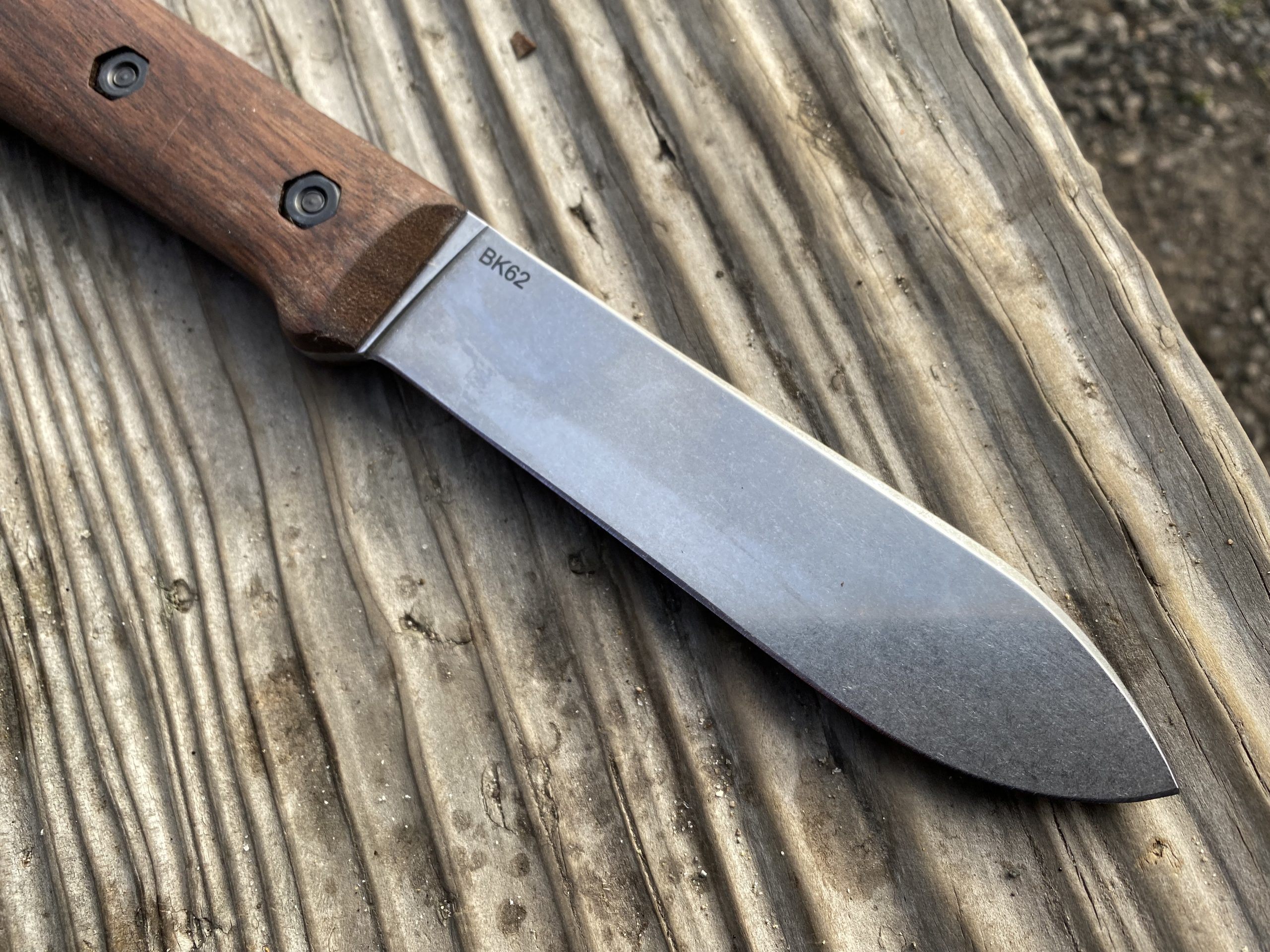
The blade is also thin—just 1/8 inch. The grind for the false spear point begins almost all the way at the hilt. That point never achieves a true false edge—but the look is there.
The blade thins out near the tip, but never reaches a thinness that would make it fragile. Oddly, the belly of the blade is not cut at a perfectly matching angle to the back of the blade (the spear point). The slight swell down in the belly is indicative of hammer work—forcing the movement of the steel—rather than straight file work that would remove stock.
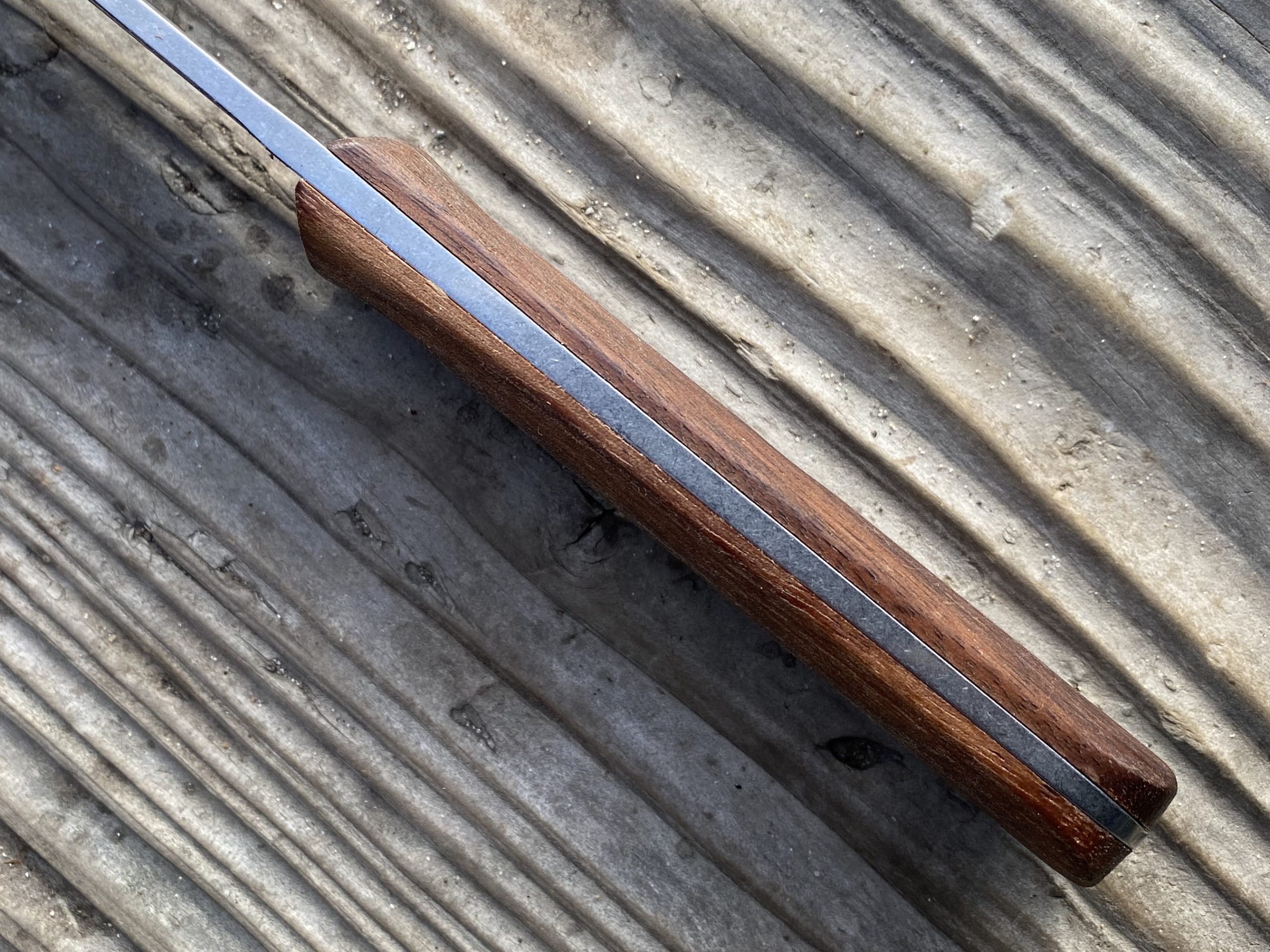
The blade is almost the same width as the handle itself, though there is a bump out that forms a slight hilt—useful for keeping your hand off the blade when the going gets aggressive.
And, because this is a blade made by a blacksmith in Appalachia, it is flat ground. Hollow grinds are rare in that area and era.
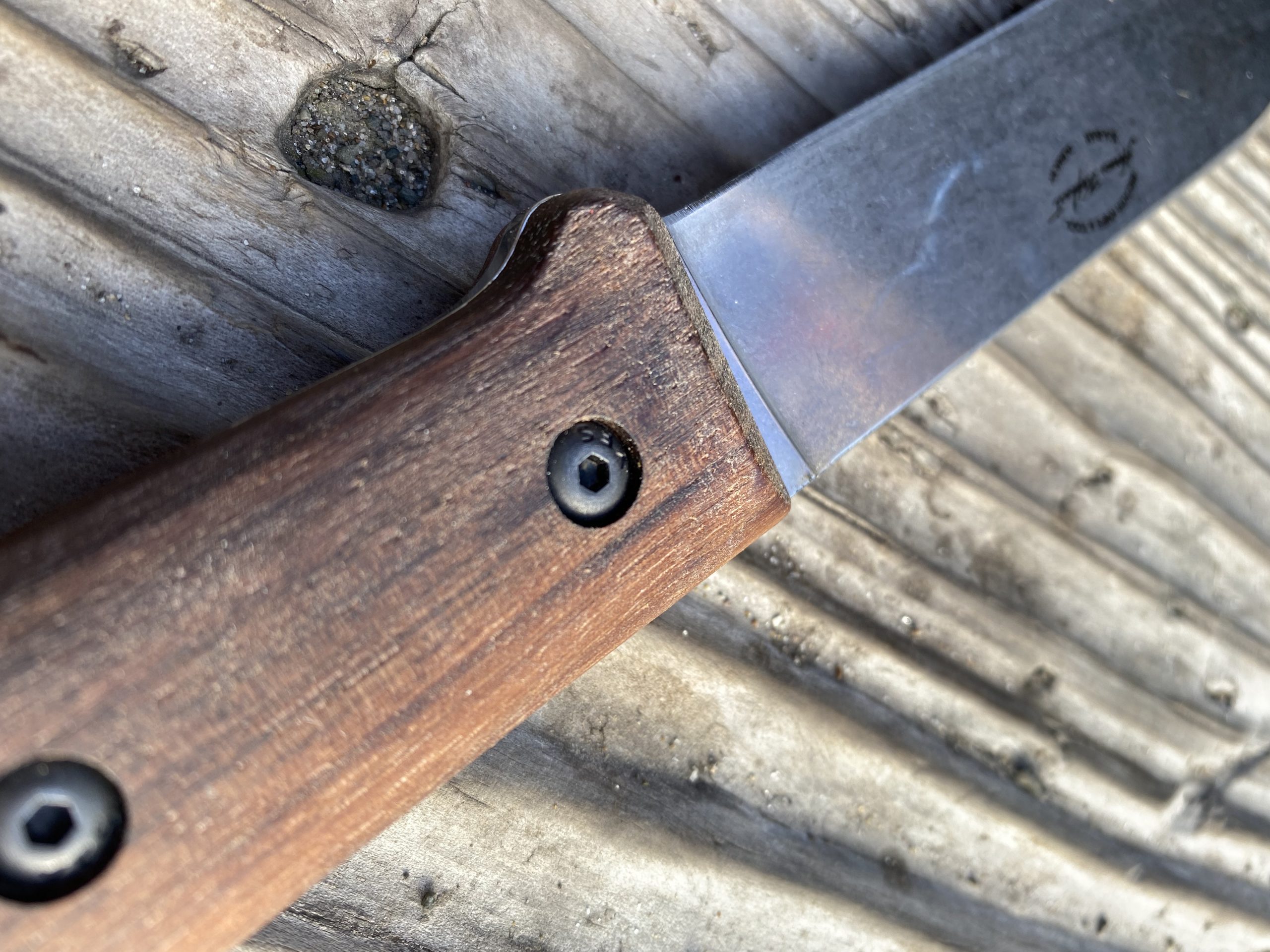
Keep in mind that this original design was a one off—or one of a pair—and not meant to be commercially produced (though that would come shortly after Kephart’s fame blew up).
It is also not a full tang knife. In an era dominated by really good mass production knives with stacked leather washer handles, the Kephart went for the full-tang construction. This isn’t easy, as the sides of the tang have to be flat, and the scales have to be flattened, too. And then the scales have to be connected to the blade, which is done with pins and epoxy now, but was more often simple rivets in this era (which allowed moisture to get under the scales—not good).
The Grips on the Kephart
Walnut is plentiful in the American south, and it is easy to work and durable—which is why it was so popular for gun stocks of the era. The scales, though, could be simple in design, but they’re not. And this is the mark of any good Kephart reproduction.
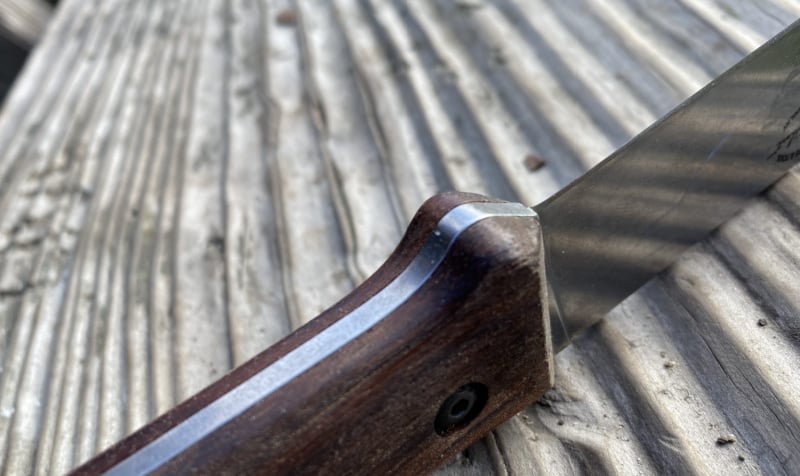
Right up near the hilt, there’s a slight narrowing, followed by a swell. It is easier to feel than it is to see. This feels really nice in the hand. Like the swell at the hilt, this swell on the scales provides a feeling of security by keeping your hand from sliding forward.
These divots also act as an anchor point for a solid pinch grip for fine work. While this is more of a utility knife, and not one that is meant for delicate work, this extra capability is an added bonus. And almost every reproduction or homage to this design leaves that off.
The Becker Kephart
The origins of this story are a bit fuzzy. Ethan Becker, the Becker behind the legendary and over-built line of outdoor knives now made by Ka-Bar, bought one of two Kepharts known to have belonged to Horace Kephart. Seriously, in the world of knives, this is easily an artifact that, as Doctor Jones would say, “belongs in a museum.” The Smithsonian.

But this one is in a private collection. Becker is proud to show it off, as was detailed in an article called “The Ogirinal Kephart Examined.” David C. Anderson, a bit of a celebrity in knife circles, wrote in the 2019 article on The Truth about Knives:
Most interesting is the blade geometry. The shape is convexed about halfway up the blade, and then slightly convexed back toward the spine as well. This makes the thickest part of the blade in the middle, rather than at the spine. Combined with chamfered edges at the spine and a distal taper, such a shape should move very efficiently through soft materials (such as flesh while processing game). Seriously, there is a lot going on within that “simple spear point” shape.
Ethan Becker builds some of the toughest production knives around. The brand is now owned by Ka-Bar, but it is still holding true to Becker’s visions. And Becker, a devotee of knife design, designed this homage after he acquired one of two original Kepharts known to have survived the test of time.
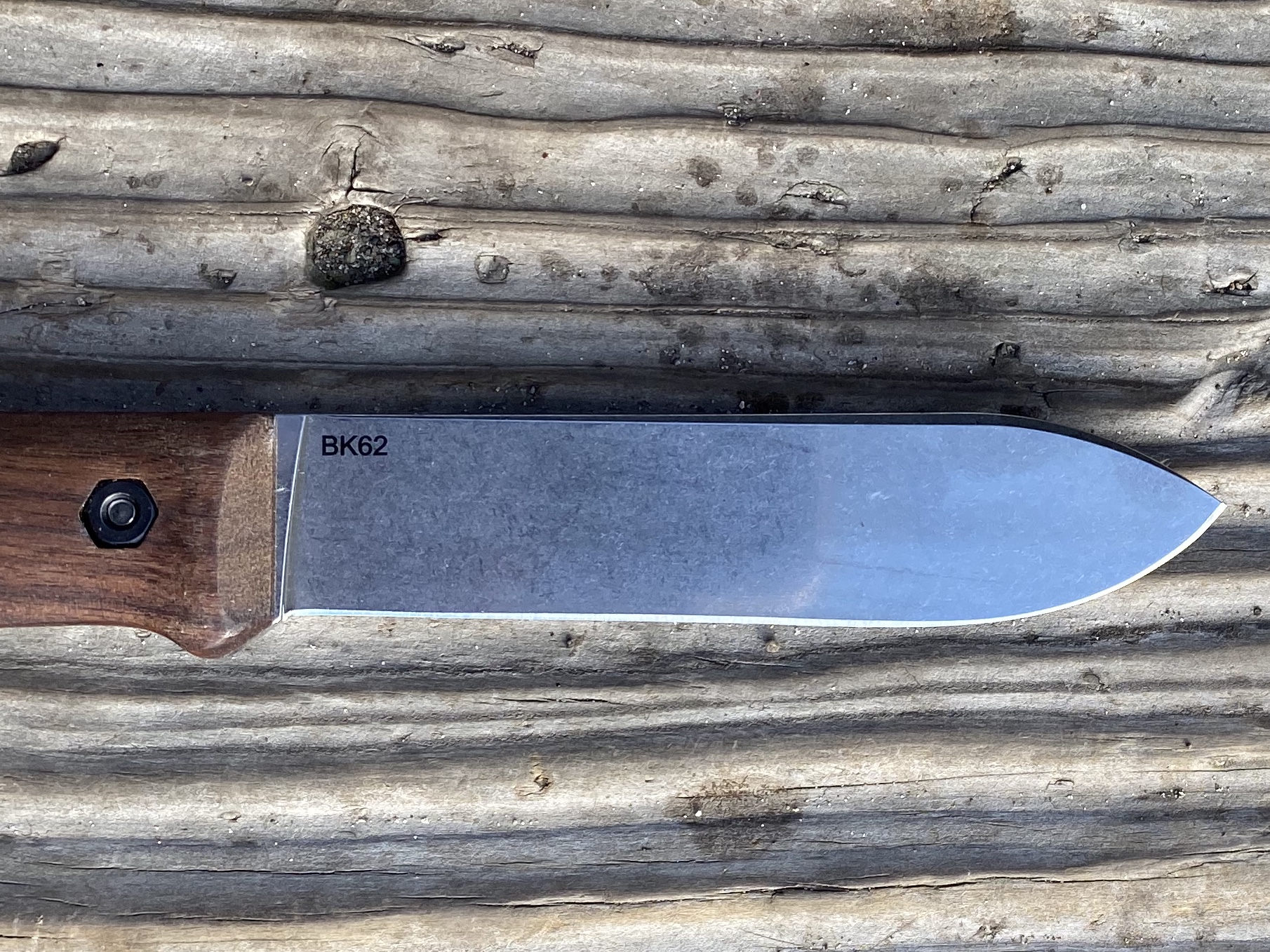
The BK62 is true to form in almost every way. If you were to see the original next to one of these, there would be no question as to the ancestry.
There are a couple of notable changes. The BK62 is made of a more modern steel: 1095 Cro Van. No need to debate that. 1095 Cro Van has a high carbon content and some decent stainless properties.
Becker also chose to make the scales bolt-on, like the rest of the Becker fixed blades. This is a solid upgrade, and allows for them to be replaced, cleaned, dried…. This, too, has obvious benefits, though it is likely to piss off the purists.

The scales are still walnut, though. And the sheath that comes with it is leather—a simple sewn and riveted wrap that holds the knife in place with a tight fit across the handle.
In the field
Becker’s Kephart tribute is likely to end up in the collections of many Becker fanboys. Not this one. I own a few Beckers—and a couple are still in their boxes—but that’s not because I’m a collector as much as it is an indication that I have my favorites. And I’ve been on the hunt for the ideal Kephart for ages.

This knife slices like a kitchen knife. And that’s what knives like this were used for. You only need one knife to split up kindling for the wood-fired cook stove, and to skin out a whitetail, and to quarter a hog, and to cut up apples…. Almost all the tasks that Kephart performed with this knife were directly related to food preparation.
As far as strength goes, the design can do almost everything well. While I wouldn’t use the blade for any serious prying, it can take a beating on the spine or the pommel. And the blade shape makes it easy to keep sharp, even in the field.
What I’d change
I recently took this knife on a couple of back-country trips, including a backpacking trip on the coast of California. In the humid air, the walnut swelled up over the edges of the blade. I need to sand it down to 600 grit and give it a good coat of lemon or tung oil and get it more environmentally stable.
I’m not crazy about the sheath, either. While functional, this knife just begs for something more robust. I’ll be working on that soon, too.
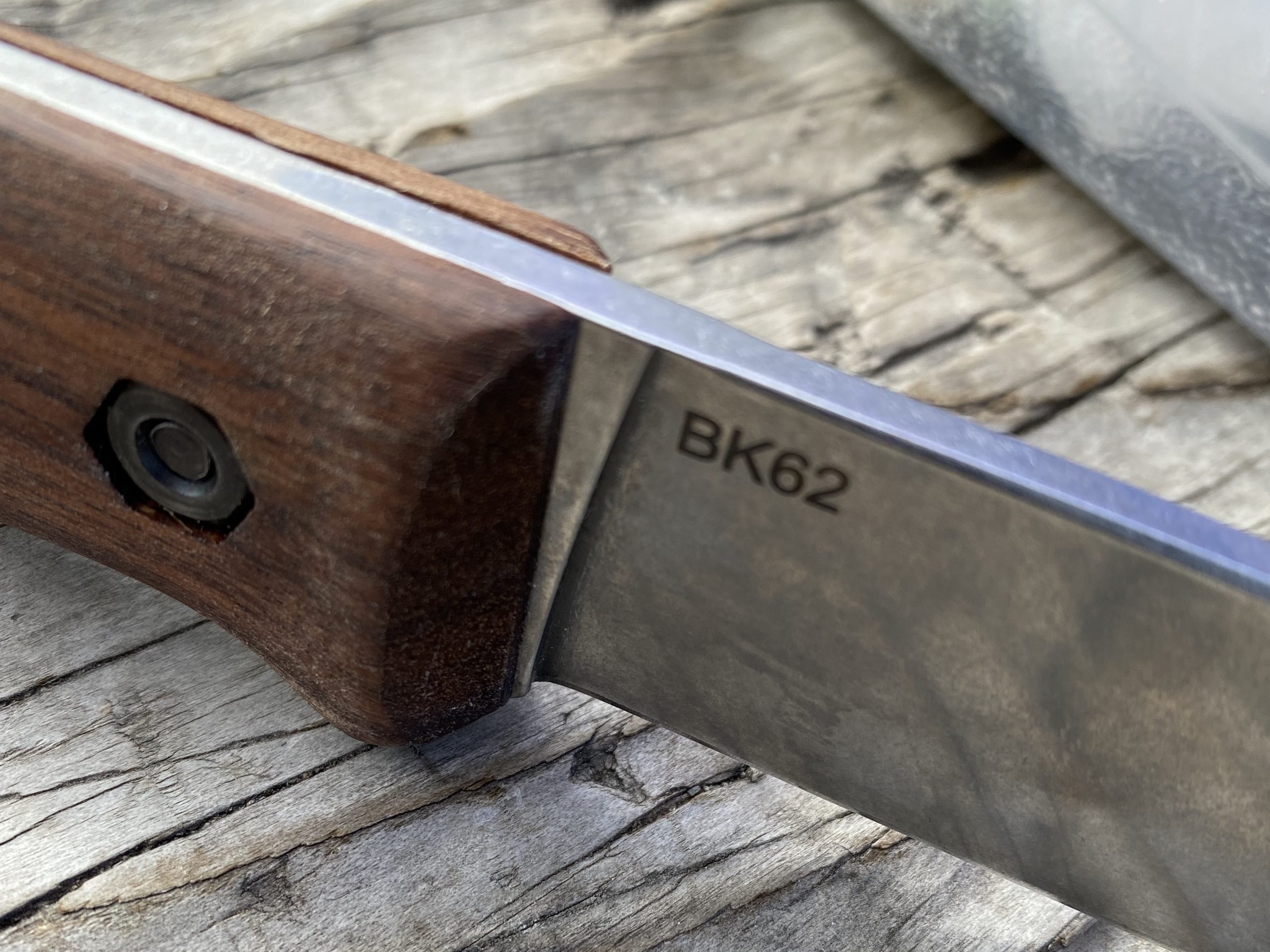
The last thing is that the spine isn’t sharp enough to use as a striker for a ferro rod. The blade is, of course, but I would rather use a crisp edge on the spine to keep the blade sharp.
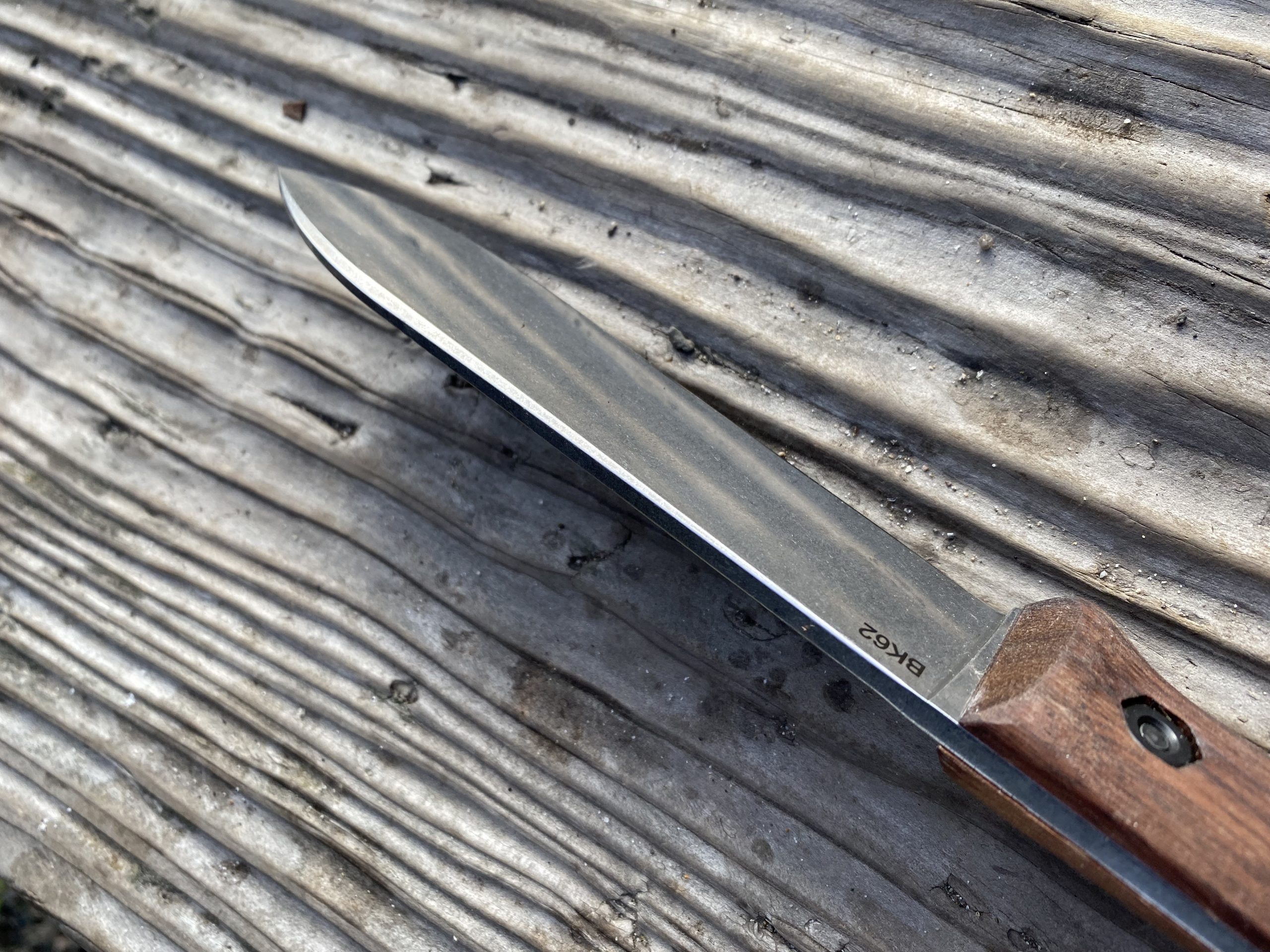
The rounded edge is likely a result of the slight stone-washed finished on the steel. I may be able to run a file down the spine and bring an edge back. This is some nitpicking here, though, but it is the length I have to go to find fault with the design.
Becker’s vision
I’m indebted to Becker for bringing this knife back. I’ve got a couple of custom Becker homages that came close to the original, but never really got this level of perfection. Something in the handle is always missing. But that’s the way it is when you work with a custom maker—you get a work of art that reflects their craft and mastery, but it doesn’t always match the knife you were building in your head.

This one is, though. The Kephart is like the Remington 700 of the knife world. It has been everywhere and done everything a knife can do. It isn’t a fighting knife, exactly, but you could use it for defense if it came to it.
In this iteration, it has more in common with the historical reproductions of Springfield Armory. It has the same appeal as the Mil-Spec 1911, or the SA35. History, yes, but no value related to its history.
Most Becker knives hit the catalog for a short while, and then disappear. These are still available in retail—usually for around $125. If you dig Americana, this is a solid choice for a serious working knife.


